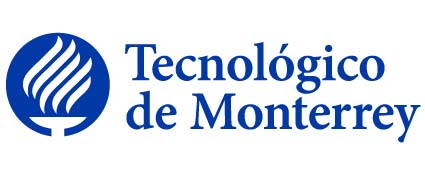
|
|||||
Disciplina asociada:Tecnología de Alimentos |
|||||
Escuela:
Ingeniería y Ciencias
|
|||||
Departamento Académico:
Bioingeniería
|
|||||
Programas académicos: |
|||||
Competencias que se desarrollan: |
|||||
Requisitos:Haber Cursado TA2001B o Estar Cursando TA2001B |
|||||
Equivalencia:No tiene. |
|||||
Intención del curso en el contexto general del plan de estudios: |
|||||
|
Este es un curso de nivel intermedio, en el cual los alumnos evalúan las interacciones que ocurren entre componentes del alimento después del procesamiento con base en la información disponible, enfocado en temas de absorción de nutrientes y mediante el análisis del efecto que procesos como congelación, tratamientos térmicos, extrusión, deshidratación, fermentación y radiación tienen sobre los nutrientes contenidos en los productos. Se requiere que el alumno tenga conocimientos previos de estructura y propiedades de biomoléculas, conceptos básicos de biología, microbiología, nutrición, nutracéuticos, nutrigenómica y nutrigenética y un conocimiento intermedio de química de alimentos. Como resultado de aprendizaje, se espera que los alumnos demuestran su competencia mediante un documento/ensayo argumentativo, donde discutan con bases científicas una deficiencia de nutrición, las matrices alimentarias y procesos convenientes para atender este problema. |
|||||
Objetivo general de la Unidad de Formación: |
|||||
|
Al terminar la unidad de formación el alumno: Evalúa las interacciones que ocurren entre los componentes de los alimentos tras el procesamiento y la digestión, con base en la información disponible. |
|||||
Técnica didáctica sugerida: |
|||||
| No especificado | |||||
Bibliografía sugerida: |
|||||
|
LIBROS DE TEXTO: * Rolfes, Sharon Rady, Understanding normal & clinical nutrition, Eleventh edition., Australia : Cengage Learning, 2018, eng, 133710003X (loose leaf edition) LIBROS DE CONSULTA: * [edited by] Lynnette R. Ferguson, Nutrigenomics and nutrigenetics in functional foods and personalized nutrition [electronic resource], Boca Raton : CRC Press, 2014, eng, 9781439876817 (e-book : PDF) * edited by C. J. K. Henry and C. Chapman, The nutrition handbook for food processors, Boca Raton, FL : CRC Press, 2010, |
|||||
Perfil del Profesor: |
|||||
|
(011002)Maestría en Tecnología y Procesamiento de Alimentos ; (011001)Maestría en Ciencia de los Alimentos ; (010401)Maestría en Procesamiento Agrícola y de Alimentos ; (140301)Maestría en Ingeniería Agrícola/Biológica/Bioingeniería ; (261201)Maestría en Biotecnología ; (301901)Maestría en Ciencias de la Nutrición ; (011002)Doctorado en Tecnología y Procesamiento de Alimentos ; (011001)Doctorado en Ciencia de los Alimentos ; (010401)Doctorado en Procesamiento Agrícola y de Alimentos ; (140301)Doctorado en Ingeniería Agrícola/Biológica/Bioingeniería ; (261201)Doctorado en Biotecnología ; (301901)Doctorado en Ciencias de la Nutrición CIP: 011002, 011001, 010401, 140301, 261201, 301901 |
|||||
|
|||||
Discipline:Food Technology |
|||||
School:
Engineering and Sciences
|
|||||
Academic Department:
Bioengineering
|
|||||
Programs: |
|||||
Competitions:STA0403A ; SEG0602B ; |
|||||
Prerequisites:TA2001B or TA2001B Corequisite |
|||||
Equivalences:None. |
|||||
Course intention within the general study plan context: |
|||||
|
This is an intermediate course, in which students assess the interactions between food components afer the processing based on the available information, focused on subjects of nutrient absorption and through the analysis of the effect that processes such as freezing, thermal treatments, extrussion, dehydration, fermentation and radiation have on nutrients contained in products. It is necessary that the student has prior knowledge on the structure and properties of biomolecules, basic knowledge of biology, microbiology, nutrition, neutraceuticals, nutrigenomics and nutrigenetics and an intermediate knowledge of food chemistry. As a learnng outcome, it is expected that students demostrate their competence through an argumentative document/essay, discussing on scientific basis a deficient nutrition, food matrices and processes convenient to address this problem. |
|||||
Course objective: |
|||||
|
|
|||||
Teaching and learning tecniques: |
|||||
| Not Specified | |||||
Suggested Bibliography: |
|||||
|
TEXT BOOKS: * Rolfes, Sharon Rady, Understanding normal & clinical nutrition, Eleventh edition., Australia : Cengage Learning, 2018, eng, 133710003X (loose leaf edition) BOOKS FOR CONSULTATION: * [edited by] Lynnette R. Ferguson, Nutrigenomics and nutrigenetics in functional foods and personalized nutrition [electronic resource], Boca Raton : CRC Press, 2014, eng, 9781439876817 (e-book : PDF) * edited by C. J. K. Henry and C. Chapman, The nutrition handbook for food processors, Boca Raton, FL : CRC Press, 2010, |
|||||
Academic credentials required to teach the course: |
|||||
|
(011002)Master Degree in Food Technology and Processing ; (011001)Master Degree in Food Science ; (010401)Master Degree in Agricultural and Food Products Processing ; (140301)Master Degree in Agricultural/Biological Engineering and Bioengineering ; (261201)Master Degree in Biotechnology ; (301901)Master Degree in Nutrition Science ; (011002)Doctoral Degree in Food Technology and Processing ; (011001)Doctoral Degree in Food Science ; (010401)Doctoral Degree in Agricultural and Food Products Processing ; (140301)Doctoral Degree in Agricultural/Biological Engineering and Bioengineering ; (261201)Doctoral Degree in Biotechnology ; (301901)Doctoral Degree in Nutrition Science CIP: 011002, 011001, 010401, 140301, 261201, 301901 |
|||||